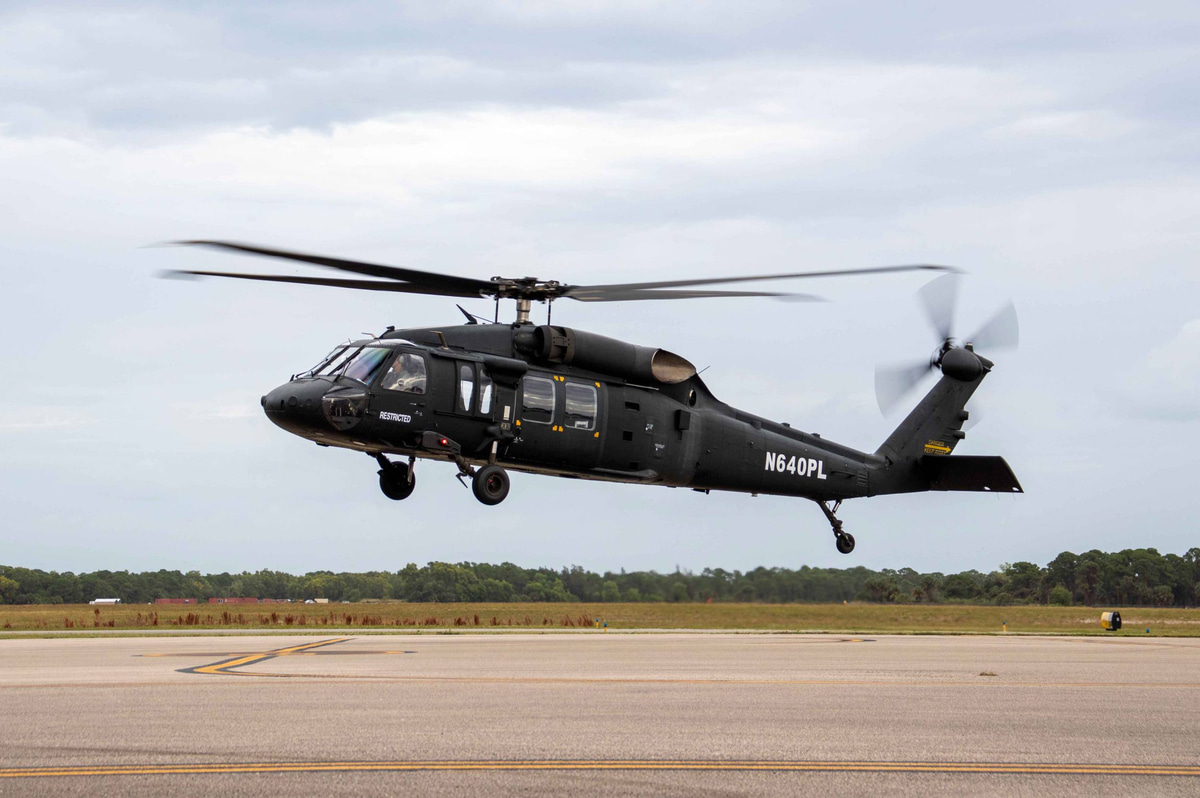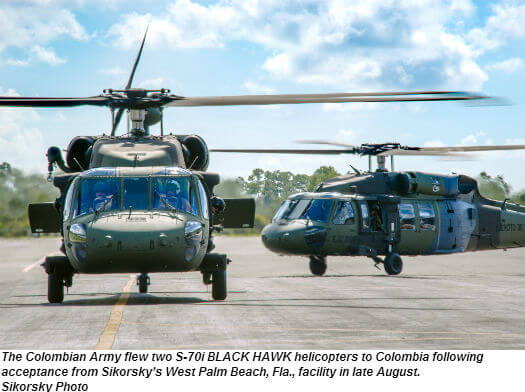A Look at the Sikorsky S 70's Function in Army and Civil Aviation
A Look at the Sikorsky S 70's Function in Army and Civil Aviation
Blog Article
High-Performance Multi-Role Rotorcraft Featuring Advanced Cabin Technologies and Integrated Sensing Unit Systems
The realm of rotorcraft technology has actually seen significant developments in current times, particularly in the world of high-performance multi-role rotorcraft furnished with cutting-edge cabin innovations and flawlessly incorporated sensing unit systems. In the complying with conversation, we will certainly check out the evolution of rotorcraft technology, delve right into the world of innovative cockpit innovations, and check out the ramifications of integrated sensing unit systems on the functional flexibility and performance of modern rotorcraft.
Development of Rotorcraft Technology
The advancement of rotorcraft modern technology has been noted by considerable improvements in the rules of aerodynamics, materials, and propulsion systems, shaping the abilities and efficiency of modern-day rotorcraft. Aerodynamic enhancements have actually boosted the efficiency and maneuverability of rotorcraft, permitting for raised speed, agility, and stability throughout trip (sikorsky s 70). Innovations in materials, such as making use of composite products and progressed alloys, have resulted in lighter yet more powerful rotorcraft structures, enhancing general performance and sturdiness. Additionally, developments in propulsion systems, including a lot more effective engines and cutting-edge propulsion technologies, have enabled rotorcraft to achieve higher altitudes, faster speeds, and greater payloads.
These advancements have not only transformed the capacities of rotorcraft yet have additionally expanded their applications throughout numerous markets, including army, industrial, and emergency situation services. The continuous advancement of rotorcraft innovation proceeds to drive advancement in the area, pushing the boundaries of what is feasible and shaping the future of upright trip.
Advanced Cockpit Innovations
Structure upon the foundational advancements in the rules of aerodynamics, products, and propulsion systems, the realm of rotorcraft technology currently moves focus in the direction of pioneering Advanced Cabin Innovations. The integration of innovative modern technologies within the cockpit setting plays an important role in enhancing the operational abilities, safety and security, and efficiency of modern-day rotorcraft. sikorsky s 70. Advanced Cabin Innovations encompass a vast array of attributes created to supply pilots with enhanced situational understanding, structured data monitoring, and intuitive control user interfaces
One of the crucial improvements in cabin layout is the application of glass cabins, which replace typical analog evaluates with high-resolution display screens. These digital systems provide personalized layouts, real-time data combination, and enhanced readability, enabling pilots to access essential information at a glance. Moreover, progressed avionics systems, such as fly-by-wire controls and augmented reality display screens, are transforming exactly how pilots engage with the airplane, permitting for accurate control and improved decision-making abilities.


Integrating sophisticated cockpit innovations not only improves pilot performance however likewise contributes to overall goal efficiency and safety in complex functional environments. By leveraging state-of-the-art technologies within the cabin, rotorcraft makers are setting brand-new requirements for operational excellence and goal success.
Integrated Sensing Unit Solutions
With the development of rotorcraft innovation, the integration of advanced Integrated Sensor Solution has actually ended up being paramount in enhancing functional efficiency and security. These Integrated Sensor Equipments include a vast variety of technologies that offer important data for different features such as navigation, surveillance, targeting, and ecological monitoring. By flawlessly incorporating sensing units like radars, video cameras, lidar, and infrared systems into rotorcraft, drivers can gain from enhanced situational awareness, boosted mission capacities, and decreased pilot work.
One key advantage of Integrated Sensing unit Solutions is their ability to collect real-time data and provide actionable understandings to pilots and goal operators. Advanced radar systems can discover and track targets over long ranges, permitting for very early danger detection and effective action preparation. Additionally, integrating infrared and electro-optical cameras enables rotorcraft to carry out reconnaissance and monitoring objectives with precision and accuracy.
Fundamentally, the combination of sophisticated sensor innovations into rotorcraft not just enhances operational performance sites however additionally contributes dramatically to total goal success and staff safety and security. As rotorcraft remain to evolve, the role of Integrated Sensing unit Solution will unquestionably stay at the forefront of development in the aerospace sector.
Operational Convenience and Performance
Enhancing functional versatility and efficiency in rotorcraft is a natural progression from the assimilation of advanced Integrated Sensing unit Equipments. By leveraging the information and insights given by these innovative sensor systems, rotorcraft can optimize their efficiency across various objectives and atmospheres.
Operational convenience incorporates the capability of rotorcraft to adjust to various functions and situations efficiently. With advanced cabin innovations and integrated sensor systems, rotorcraft can seamlessly change between tasks such as search and rescue, clinical evacuation, security, and more. This flexibility boosts the rotorcraft's ability to fulfill diverse functional needs without calling for comprehensive reconfiguration.
Efficiency in rotorcraft operations is crucial for taking full advantage of mission efficiency and source usage. Integrated sensing unit systems play a pivotal function in improving operational efficiency by supplying real-time information on climate condition, surface mapping, target monitoring, and much more. This data enables pilots to make educated decisions swiftly, enhance trip paths, conserve fuel, and improve overall mission efficiency.
Effect on Modern Aviation Workflow

Additionally, the integration of innovative sensors promotes boosted mission preparation and execution, making it possible for rotorcraft to carry out a wide variety of tasks with boosted precision. From search and rescue operations to airborne firefighting and legislation enforcement objectives, the capabilities of contemporary rotorcraft outfitted with sophisticated cockpit technologies and incorporated sensing unit systems are unmatched.
Furthermore, the influence of these developments expands beyond operational performance to cost-effectiveness and sustainability. By optimizing flight courses, fuel usage, and maintenance schedules, high-performance rotorcraft geared up with innovative cockpit innovations and sensing units add to decreasing functional prices and environmental effect, making them indispensable possessions in modern-day aviation operations.
Final Thought
To conclude, the high-performance multi-role rotorcraft with advanced cabin innovations basics and incorporated sensing unit systems stands for a significant evolution in air travel modern technology. These developments improve operational flexibility and effectiveness, eventually influencing modern-day aeronautics procedures in a positive way. The integration of these advanced innovations permits enhanced capacities and efficiency in numerous goal circumstances, showcasing the proceeded advancement of rotorcraft modern technology in the aviation industry.
The world of rotorcraft modern technology has actually seen notable developments in recent times, particularly in the world of high-performance multi-role rotorcraft outfitted with cutting-edge cabin modern technologies and flawlessly incorporated sensor systems. From enhanced mission convenience to boosted operational efficiency, the convergence of innovative cabin innovations and incorporated additional info sensing unit systems has ushered in a brand-new period of opportunities for rotorcraft applications. In the complying with conversation, we will explore the development of rotorcraft innovation, delve right into the realm of innovative cabin technologies, and take a look at the implications of incorporated sensing unit systems on the operational adaptability and effectiveness of modern rotorcraft.

Report this page